Interesting things about Aphids
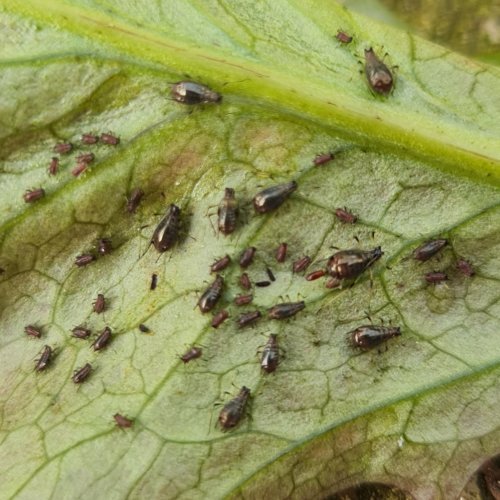
It's definitely Aphid time here in South Oz and they're making inroads into people's gardens. I bet @minismallholding has a few too, as she's just down the road (by Aussie standards). So let's try to understand these critters so that we can work out the best way to deal with them.
Today, I’ll write some generalities about Aphids and introduce you to one common variety, Uroleucon, which likes to infest plants of the Asteraceae Family such as Lettuces. In the pics you can see them at various stages of growth from newborns adult and there is even a winged adult to boot!

Aphids have an interesting love life.
Aphids are most active when the temperature averages above 20 degrees Centigrade when winged Aphids fly in and start a new colony on your favourite plants. Winged adults arrive in late Summer or Autumn when heavier rainfall has stimulated a flush of new growth on plants.
Here’s a surprise – Aphids can reproduce sexually and asexually but mostly skip the sexual part! There are usually no males involved in the process so Aphids miss out on the joy of sex (the process is one of cloning and is called ‘parthenogenesis’). This means that nearly all Aphids are female and are born pregnant! In most circumstances, they also give birth to live young which explains how they can rapidly infest our favourite veggies. Males grow as conditions are suitable and some Aphids lay eggs. It’s all to do with environmental triggers.
Like other insects, Aphids go through a series of changes where they moult their exoskeletons The stages between the moults are called ‘instars’. In the pics, you can see various instars, from tiny nymphs to big, fat, adults. When their bodies get top large for their not very stretchy exoskeleton, they break out of it and leave it behind as a dry, white shell.
Winged aphids are also born as required. The birth of winged Aphids can be triggered by changes in weather patterns indicating a change of season or, in the case of unlucky gardeners, too large a population. Winged Aphids are ready to fly away start a colony on a new plant (hopefully in someone else’s garden, not mine).
What damage do they do?
Aphids damage plants by directly feeding on them but the real risk comes from the possibility of them introducing viruses and other pathogens into your garden and the ability to transmit particular viruses differs with each aphid species.
Aphids also excrete a sticky, sweet liquid that attracts Ants and some other insects. Ant colonies will actually farm and protect Aphid colonies in order to get a regular supply of this fluid which is known as ‘honeydew’. A build up of honeydew encourage fungal infections such as Sooty Mold on your plants.
How to deal with a small infestation-
Aphids are soft creatures and the easiest way to kill them is with a jet of water from a hose or a spray bottle. They don’t hold onto plant parts with any great force and are easy to dislodge. They can’t crawl far once off of their plant and die quickly.
Spray every couple of days so that those that hatch after your first treatment are killed off. That’s all there is to a small infestation.
Dealing with large infestations –
Larger infestations need to be dealt with differently. If you have an issue with a huge infestation, White Oil works a treat. Just spray every couple of days to clean up hatchlings and consider removing whole leaves on heavily infested plants. Put the leaves in bucket of water to drown the Aphids and you’re done.
You can also use the traditional garlic and chilli spray, that works a treat. I ferment my mix for a week or so to give it a boot.
Trap plants
You can use plant to lure Aphids and reduce the number reaching your food plants. ‘Trap’, or ‘sacrificial’ plants are usually in the same Family as the plants that you want to protect and often grow earlier in the season. Trap plants will often be weeds that, in commercial agriculture, are cursed because they are the home of pests that will infest their expensive crops but, consciously used on a small scale, provide a valuable tool for the home grower. One of my favourites is Sow Thistle, which grows prolifically at this time of year and gets covered with Aphids at the drop of a hat. I monitor the Thistles in and around our garden and get advance warning of upcoming infestations. Those that I grow in the garden attract the Aphids and make it easy to remove whole colonies before they start to sniff around my prized veggies.
Another advantage is that the chooks and quail love eating the Thistles and wolf down the Aphids at the same time. Thistles also make an excellent addition to the compost. All I do is submerge the infested part in water overnight to drown the Aphids, then add the lot to the compost.
You can also grow vegetables as dedicated trap crops and treat them in the same way.
Natural predators
The best way to control Aphids is to let Nature take her course. There are lots of predators who like nothing more than devouring Aphids.
Ladybirds are, perhaps, the best known examples. The appetites of adult Ladybirds and their larvae are legendary and a few of them can polished off a small Aphid infestation before you know it.
There are also many tiny, parasitic Wasps who love to lay their eggs in Aphids and they are connoisseurs, with many species preying on specific species of Aphid. If you look closely, you will see the bronze coloured mummified remnants of parasitised Aphids. Spiders, Lacewings, Damsel Bugs, Ladybird Beetles and Hoverfly larvae are all predators that don’t mind Aphids for breakfast, lunch and dinner!
It takes a lot of observation, self control and patience to establish a balance of predators and prey in your garden and it is very tempting to reach for a spray but the depth of understanding about your garden that you will gain is well worth it.
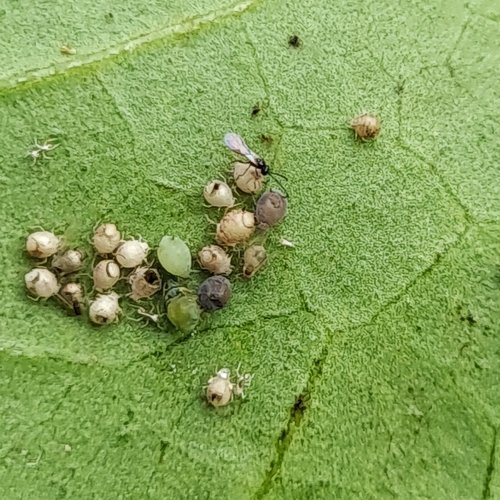
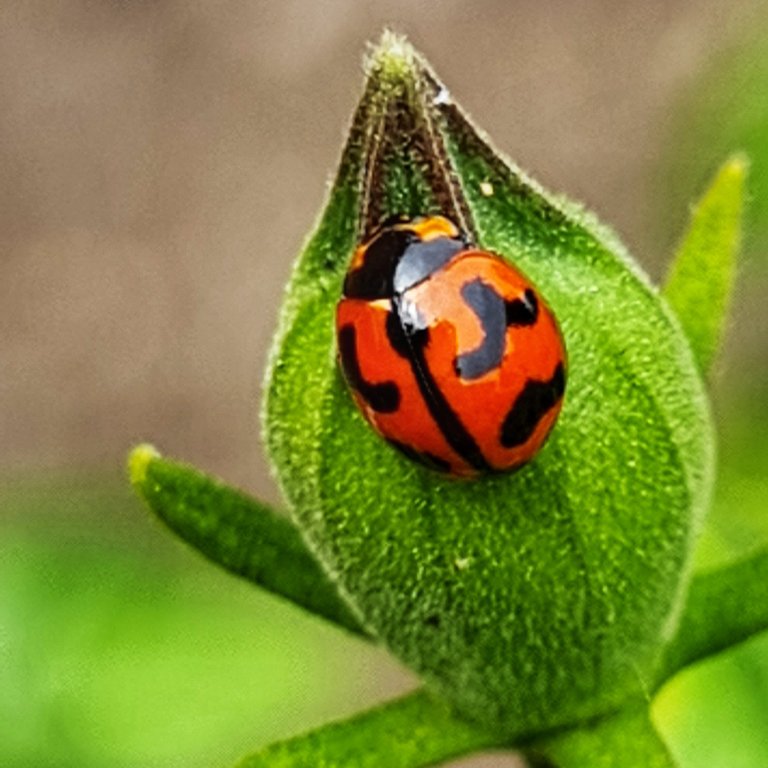
Ladybird
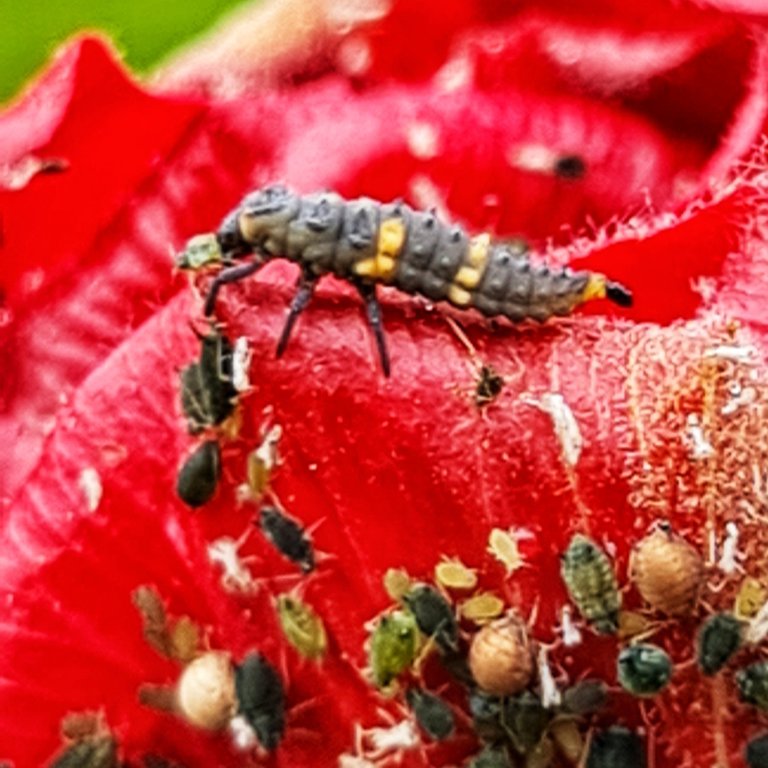
Ladybird larva





Ahhh, but you left out one important part: if the plants are healthy, there's no infestation at all. I've not had aphids in years, but they used to be a bane of my existence. Balancing the soil was the change that worked. Plus weekly foliar feedings with balanced ingredients.
You're right
!luv
@ligayagardener(1/1) gave you LUV. tools | wallet | discord | community | <><
tools | wallet | discord | community | <><
HiveBuzz.me NFT for Peace
I hate them in my tomatoes! lol
!1UP
Click this banner to join "The Cartel" discord server to know more.
Those and Mites!
You have received a 1UP from @gwajnberg!
@stem-curator, @vyb-curator, @pob-curator
And they will bring !PIZZA 🍕.
Learn more about our delegation service to earn daily rewards. Join the Cartel on Discord.
I use infusion of nettles and garlic that goes quite well. I also have the garden surrounded by aromatics and that helps.
That's interesting, what role does the nettles play?I love Nettles and use them for so many things, so this will be a new use for me!
The infusion of nettles is a natural fungicide, they also act on different insects. But above all, its function is to improve the plant's defenses and increase its vigor so that they can defend themselves naturally.
That's good to know. I'll add it to the next batch!
Here in Norway, we have green color one they were mostly on our red currant plant and roses.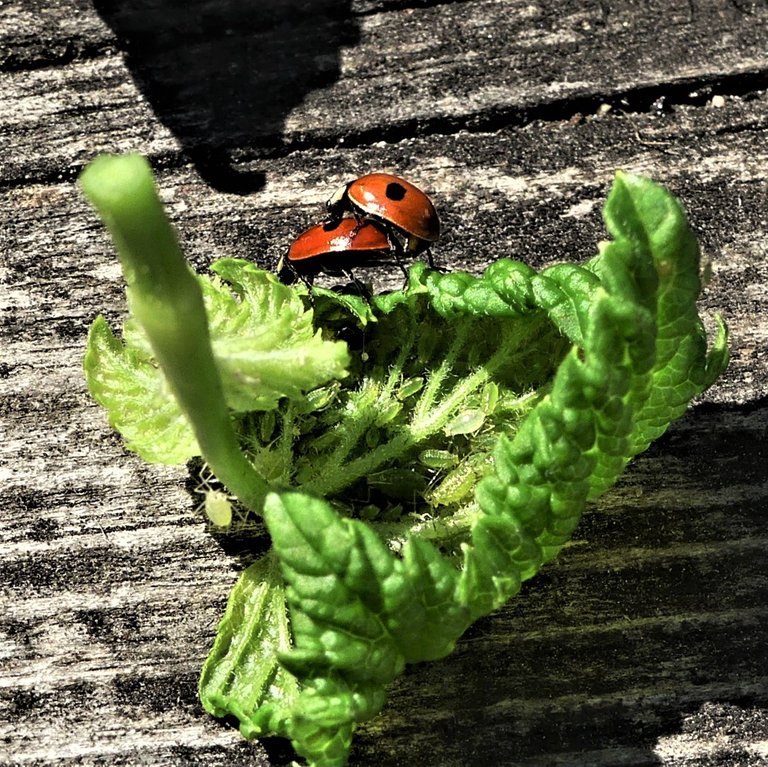
At the same time, there were lots of ladybugs on red currant but I did like you said just removed the leaves which one affected. here we use old-style household soap spray to kill them.
thank you for sharing. greetings
Those look like very very happy Ladybugs 😍
You've been curated by @gardenhive on behalf of the HIVE GARDEN COMMUNITY, home of the #gardenjournal challenge. We support all kinds of garden and plant related content. Delegations to the curation account, @gardenhive, are welcome!
Thank you, @gardenhive I hope that some readers can learn enough about the buggers to save some plants this year!
Good information, I'll keep an eye out for them! I like the ladybug solution.
🌿👍🤠💗😁🌿🥦